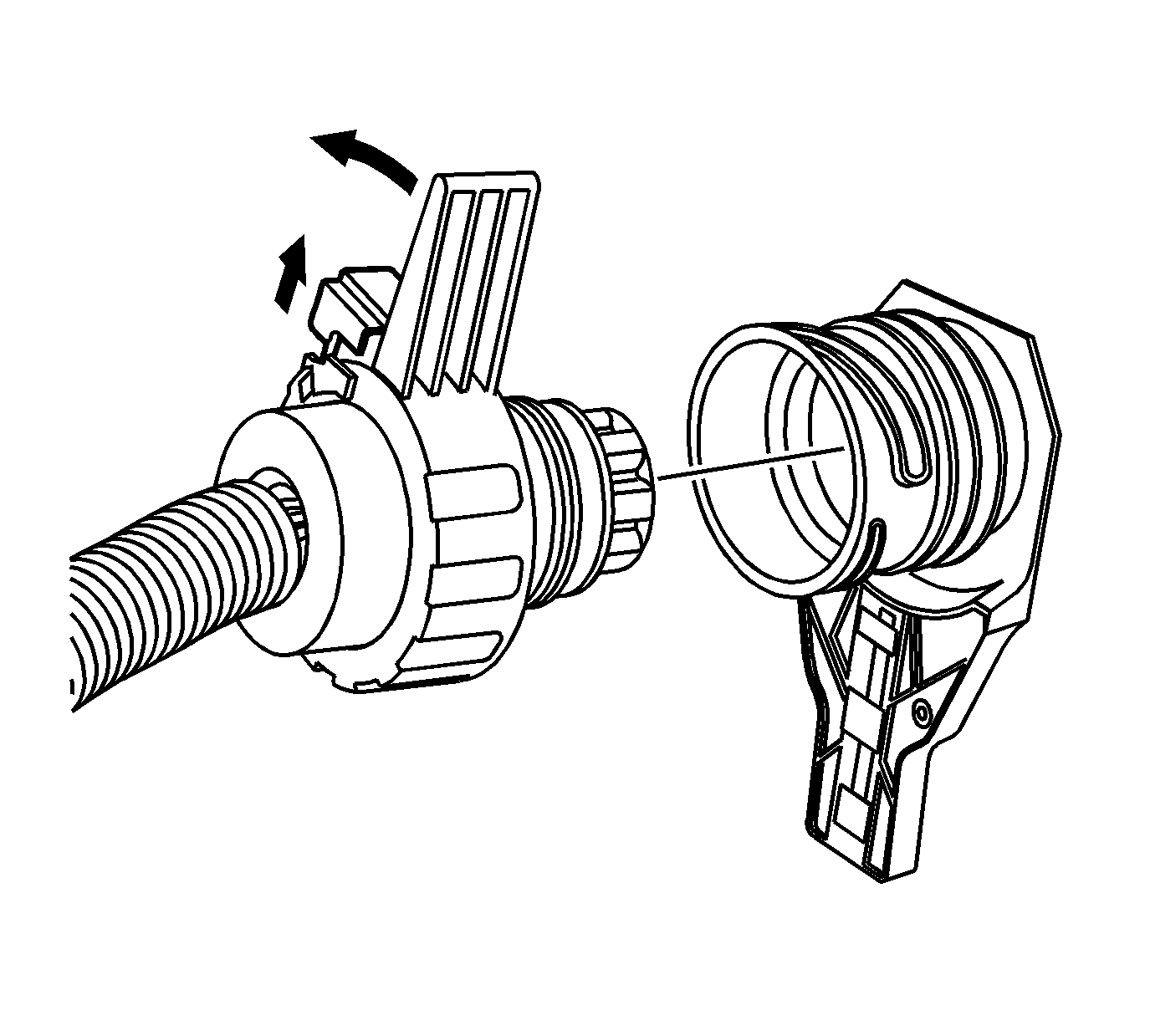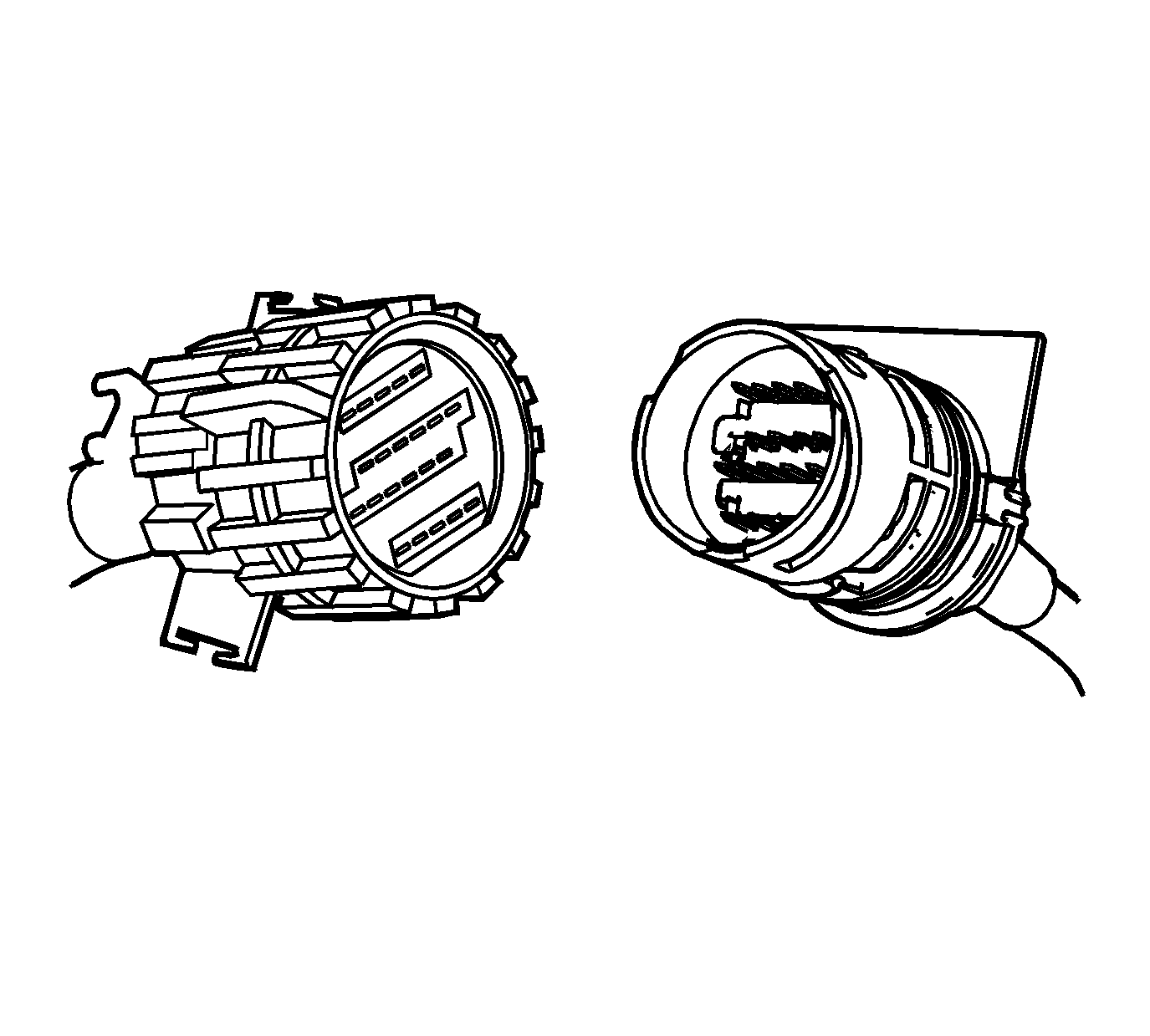16-Way Automatic Transmission Inline Connector

The transmission electrical connector is an important part of the transmission operating system. Any interference with the electrical connection can cause the transmission to set diagnostic trouble codes or affect proper operation. The following items
can affect the electrical connection:
| • | Bent pins in the connector from rough handling during connection and disconnection |
| • | Wires backing away from the pins or coming uncrimped, in the external wiring harness |
| • | Dirt contamination entering the connector when disconnected |
| • | Transmission fluid leaking into the connector, wicking up into the external wiring harness and degrading the wire insulation |
| • | Moisture intrusion in the connector |
| • | Low pin retention in the external connector from excessive connection and disconnection of the wiring connector assembly |
| • | Pin corrosion from contamination |
| • | Damaged connector assembly |
Remember the following points:
| • | Limit twisting or wiggling the connector during removal. Bent pins can occur. |
| • | Do not pry the connector off with a screwdriver or other tool. |
| • | Whenever the transmission external wiring connector is disconnected from the internal harness and the ignition is ON, DTCs will set. Clear these DTCs after reconnecting the external connector. |
Use the following procedure to disconnect the engine side of the 16-way connector from the transmission side:
Important: The 24-way inline connector must be removed first due to clearance of the tab on the 16-way connector. Refer to 24-Way Automatic Transmission Inline Connector.
- Unlock the slide lock on the engine wiring harness connector.
- Rotate the connector lever counterclockwise and remove the connector from the electrical connector passage sleeve.
Use the following procedure to reconnect the engine side of the 16-way connector to the transmission side:
- Orient the alignment slot on the engine side of the connector with the alignment tab on the electrical connector passage sleeve.
- Slide the engine side connector through the electrical connector passage sleeve and into the transmission side connector.
- Rotate the connector lever clockwise until the connector is fully seated.
- Lock the slide lock on the connector.
24-Way Automatic Transmission Inline Connector

The transmission electrical connector is an important part of the transmission operating system. Any interference with the electrical connection can cause the transmission to set diagnostic trouble codes or affect proper operation. The following items
can affect the electrical connection:
| • | Bent pins in the connector from rough handling during connection and disconnection |
| • | Wires backing away from the pins or coming uncrimped, in the external wiring harness |
| • | Dirt contamination entering the connector when disconnected |
| • | Transmission fluid leaking into the connector, wicking up into the external wiring harness and degrading the wire insulation |
| • | Moisture intrusion in the connector |
| • | Low pin retention in the external connector from excessive connection and disconnection of the wiring connector assembly |
| • | Pin corrosion from contamination |
| • | Damaged connector assembly |
Remember the following points:
| • | Limit twisting or wiggling the connector during removal. Bent pins can occur. |
| • | Do not pry the connector off with a screwdriver or other tool. |
| • | Whenever the transmission external wiring connector is disconnected from the internal harness and the ignition is ON, DTCs will set. Clear these DTCs after reconnecting the external connector. |
Use the following procedure to disconnect the engine side of the 24-way connector from the transmission side:
- Rotate the connector collar counterclockwise.
- Remove the connector from the electrical connector passage sleeve.
Use the following procedure to reconnect the engine side of the 24-way connector to the transmission side:
- Orient the alignment slot on the engine side of the connector with the alignment tab on the electrical connector passage sleeve.
- Slide the engine side connector through the electrical connector passage sleeve and into the transmission side connector.
- Rotate the connector collar clockwise until the connector is fully seated.


